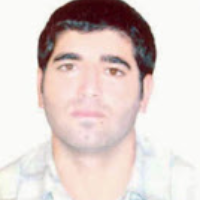Review and analysis of the happy city situation and Identification its determinants in small urban spaces (Case: Ravansar Township)
Providing and promoting the level of happiness and vitality of citizens is one of the most important pillars of quality of life in urban spaces Which in recent decades, has attracted increasing attention from experts and urban planners and Has been raised as one of the most important goals of governments and the United Nations. The purpose of this quantitative and applied study has been done using a combination of descriptive-analytical and exploratory methods, is a study and analyze the situation of Shad city and identify its determinants in small urban spaces Which has been done as a case study in Ravansar city which is part of Kermanshah province. The statistical population of the study includes 7122 heads of households and among them with Using sample size calculation methods, 364 people were estimated as a statistical sample and the samples were selected completely randomly. The main research tool for collecting field data is a researcher-made questionnaire whose validity and reliability have been confirmed. The results showed that among the three indicators of a happy city (Social, physical and economic indicators) The average of social index with the value of 3.124 was significantly higher than the average of base (number 3) and The average of two physical and economic indicators respectively with values of 2.608 and 2.587, Have been significantly lower than the baseline mean. The results of the survey showed the general condition of the city happy the average calculated with the value of 2.788 Has been significantly below average. Regarding the determinants of a happy city, the results showed Due to the four identified key factors, 61.956% of the variance of the dependent variable has been explained. These factors and the percentage of variance of their specific value in order of importance are: Physical stability (21.041), Socio-cultural sustainability (16.4), Economic Stability (13.151) and Environmental sustainability (11.356). The identified factors seem to be a subset of the macro factor "integrated and efficient urban management" and Promoting this factor, as the main source of most policies and planning, can have a significant impact on the realization of a happy city in the study area.
-
Identifying the most important obstacles to citizen participation in the decision-making process of Islamic councils in Ilam)
Davood Jamini, *
Research and Urban Planning, -
Identification and analysis of the most important economic and social impacts of the covid-19 pandemic on tourism sample areas (case study: Sarab Ravansar, Kermanshah province)
Davood Jamini, Ali Shamsoddini, , Mohammadreza Ghaedi *
Human Geography Research Quarterly,



